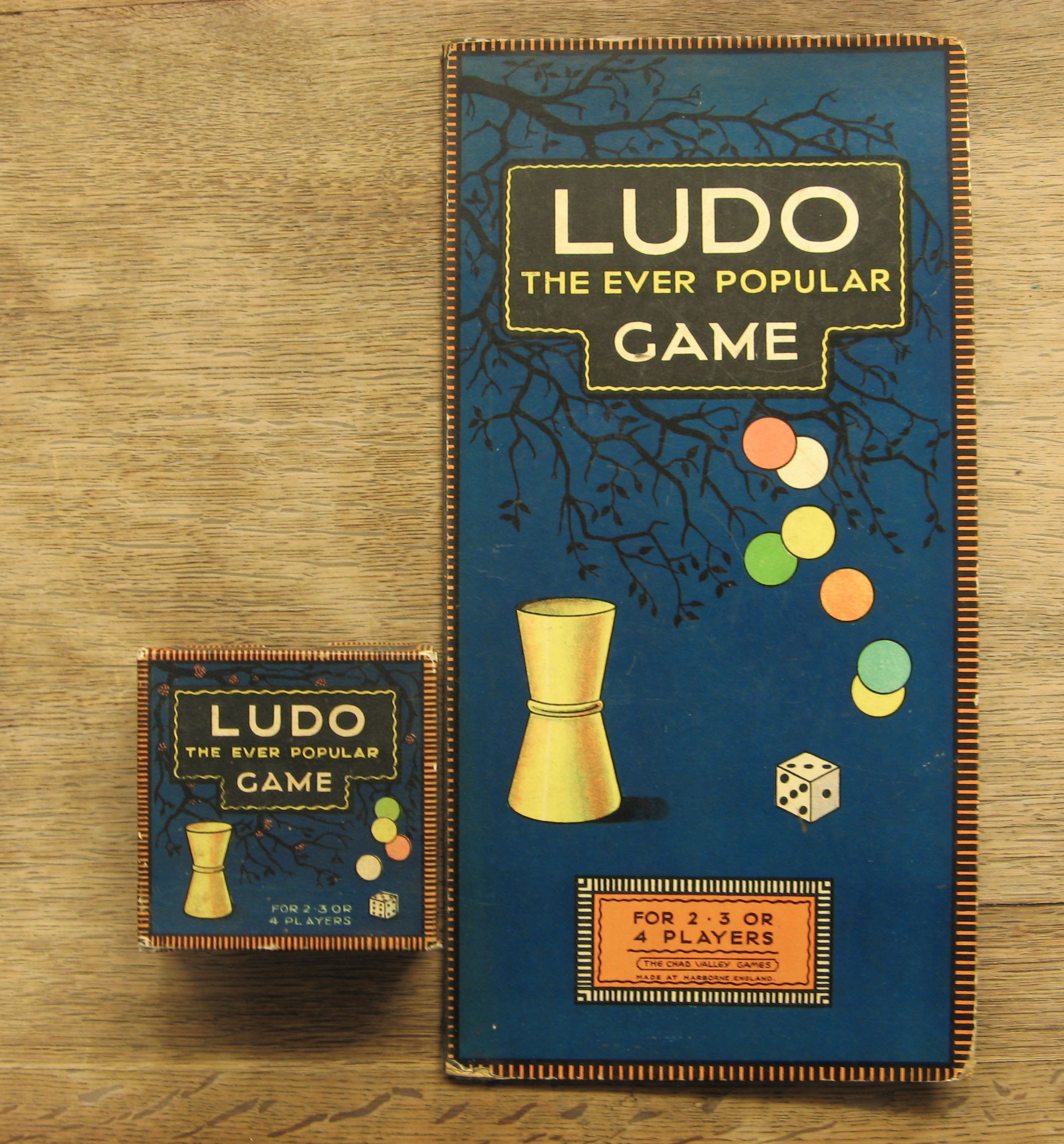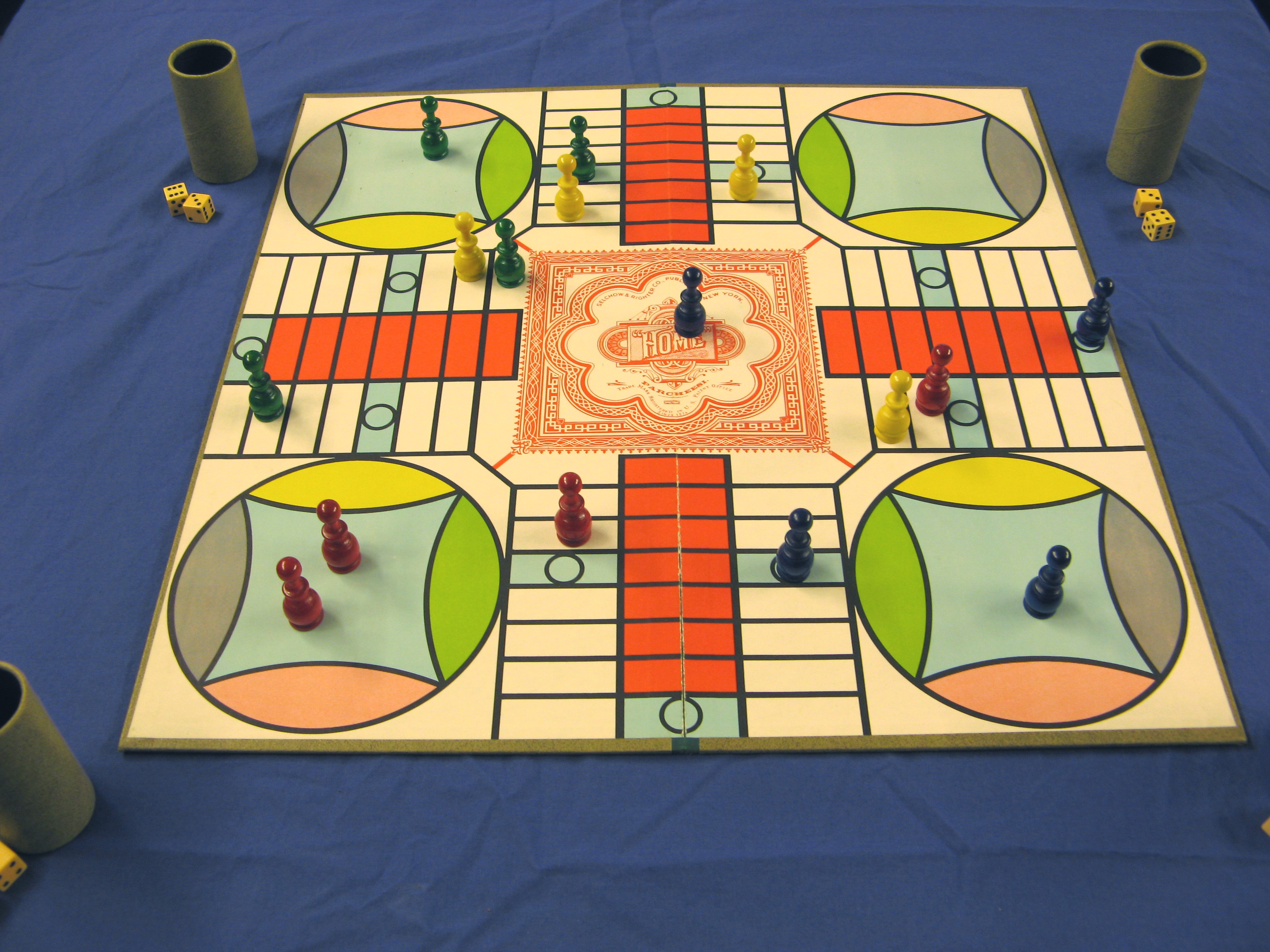|
Parqués
Parqués () is the Colombian version of a board game in the cross and circle family (the category that includes Pachisi). The game is described as a "random thinking" game: the moves depend on the roll of the dice but players must consider possible strategies before executing their move. The objective of the game is to advance all the pieces to the end. Once in the safety zone, players can use two dice until they are one space away from home, where they will then use just one die. Colombian culture Parqués is the Colombian version of Parcheesi, which itself is a version of Pachisi (which originated in India). The meaning of the word may be a translation of "Pachisi", also influenced by similar games such as Parcheesi. Parqués as a word in another context has no meaning. Although it could be argued that the game's origin is Spanish (from Parchís) due to the similarity between both games, there is wide agreement in Colombia that the game is completely Colombian. Parqués st ... [...More Info...] [...Related Items...] OR: [Wikipedia] [Google] [Baidu] |
Pachisi
Pachisi ( , ) is a cross and circle board game that originated in Ancient India. It is described in the ancient text ''Mahabharata'' under the name of "Pasha". It is played on a board shaped like a symmetrical cross. A player's pieces move around the board based upon a throw of six or seven cowrie shells as lots, with the number of shells resting with the aperture upward indicating the number of spaces to move. The name of the game is derived from the Hindi word , meaning 'twenty-five', the largest score that can be thrown with the cowrie shells; thus this game is also known by the name ''Twenty-Five''. There are other versions of this game where the largest score that can be thrown is thirty. In addition to chaupar, there are many versions of the game. (barsis) is popular in the Levant, mainly Syria, while Parchís is another version popular in Spain and northern Morocco. Parqués is its Colombian variant. Parcheesi, Patchesi, Sorry!, and Ludo are among the many Wes ... [...More Info...] [...Related Items...] OR: [Wikipedia] [Google] [Baidu] |
Ludo (board Game)
Ludo (; ) is a Abstract strategy game, strategy-based board game for two to four players, in which the players race game, race their four from start to finish according to the rolls of a single dice, die. Like other cross and circle games, Ludo originated from the Indian game Pachisi. The game and its variations are popular in many countries and under various names. History Ludo has its origins in the Indian game of Pachisi, created in India in the sixth century CE. It was modified to use a cubic die with a die cup and patented as "Ludo" in England in 1896 by Alfred Coller.Coller eventually patented the game and sold it as "Royal Ludo". The board game Uckers, popular in the Royal Navy, is based on Ludo. Ludo board Special areas of the Ludo board are typically coloured bright yellow, green, red, and blue. Each player is assigned a colour and has four tokens in their colour. The board is normally square with a cross-shaped , with each arm of the cross having three columns of squ ... [...More Info...] [...Related Items...] OR: [Wikipedia] [Google] [Baidu] |
Colombia
Colombia, officially the Republic of Colombia, is a country primarily located in South America with Insular region of Colombia, insular regions in North America. The Colombian mainland is bordered by the Caribbean Sea to the north, Venezuela to the east and northeast, Brazil to the southeast, Peru and Ecuador to the south and southwest, the Pacific Ocean to the west, and Panama to the northwest. Colombia is divided into 32 Departments of Colombia, departments. The Capital District of Bogotá is also the List of cities in Colombia by population, country's largest city hosting the main financial and cultural hub. Other major urban areas include Medellín, Cali, Barranquilla, Cartagena, Colombia, Cartagena, Santa Marta, Cúcuta, Ibagué, Villavicencio and Bucaramanga. It covers an area of 1,141,748 square kilometers (440,831 sq mi) and has a population of around 52 million. Its rich cultural heritage—including language, religion, cuisine, and art—reflects its history as a co ... [...More Info...] [...Related Items...] OR: [Wikipedia] [Google] [Baidu] |
Cross And Circle
Cross and circle is a board game design used for race games played throughout the world. Design The basic design comprises a circle divided into four equal portions by a cross inscribed inside it like four spokes in a wheel; the classic example of this design is yut. The term "cross and circle game", however, is also applied to boards that replace the circle with a square, and cruciform boards that collapse the circle onto the cross; all three types are topologically equivalent. Ludo and ''Parcheesi'' (both descendants of pachisi) are examples of frequently played cruciform games. The category may also be expanded to include circular or square boards a cross which are nevertheless quartered (Zohn Ahl), and boards that have more than four spokes ('' Aggravation'', ''Trivial Pursuit''). The gameboard for the Aztec game patolli consists of a collapsed circle an interior cross and thus has the distinction of being a cross that a circle (topologically), without being a cross c ... [...More Info...] [...Related Items...] OR: [Wikipedia] [Google] [Baidu] |
Parcheesi
''Parcheesi'' is a brand-name American adaptation of the Indian cross and circle board game Pachisi, published by E. G. Selchow & Co and Winning Moves Games USA. Equipment ''Parcheesi'' is typically played with two dice, four pieces per player and a with a track around the outside, four corner spaces and four ''home paths'' leading to a central end space. The most popular ''Parcheesi'' boards in America have 68 spaces around the edge of the board, 12 of which are darkened ''safe spaces''. Each corner of the board contains one player's ''nest'', or . Setup * Each player positions their four single colored pieces in their respective starting nest. * Each player rolls a single die to determine player order. The player with the lowest roll goes first. * The order of players' turns moves to the next player on the current player's left. * Pieces move from the nest to the colored starting space to the left of the nest, per rules in the following section. Rules Gameplay A player r ... [...More Info...] [...Related Items...] OR: [Wikipedia] [Google] [Baidu] |
India
India, officially the Republic of India, is a country in South Asia. It is the List of countries and dependencies by area, seventh-largest country by area; the List of countries by population (United Nations), most populous country since 2023; and, since its independence in 1947, the world's most populous democracy. Bounded by the Indian Ocean on the south, the Arabian Sea on the southwest, and the Bay of Bengal on the southeast, it shares land borders with Pakistan to the west; China, Nepal, and Bhutan to the north; and Bangladesh and Myanmar to the east. In the Indian Ocean, India is near Sri Lanka and the Maldives; its Andaman and Nicobar Islands share a maritime border with Thailand, Myanmar, and Indonesia. Modern humans arrived on the Indian subcontinent from Africa no later than 55,000 years ago., "Y-Chromosome and Mt-DNA data support the colonization of South Asia by modern humans originating in Africa. ... Coalescence dates for most non-European populations averag ... [...More Info...] [...Related Items...] OR: [Wikipedia] [Google] [Baidu] |
Parchís
Parchís is a Spanish board game of the original from the Cross and Circle family. It is an adaptation of the Indian game Pachisi. Parchís was a very popular game in Spain at one point as well as in Europe and north Morocco - specifically Tangiers and Tetouan, and it is still popular especially among adults and seniors. Since it uses dice, Parchís is not usually regarded as an abstract strategy game like checkers or chess Chess is a board game for two players. It is an abstract strategy game that involves Perfect information, no hidden information and no elements of game of chance, chance. It is played on a square chessboard, board consisting of 64 squares arran .... It does not depend entirely on luck either, since the four pawns under a player's command demand some sort of strategy. Parchís is license-free in Spain, so in stores it is just as easy to find as a deck of cards, and is usually cheaper. Although the original game allows up to four players and has 68 spac ... [...More Info...] [...Related Items...] OR: [Wikipedia] [Google] [Baidu] |
Mens Erger Je Niet
In ancient Roman religion, Mens, also known as Mens Bona (Latin for "Good Mind"), was the personification of thought, consciousness and the mind, and also of "right-thinking". The founding ''( dies natalis)'' of her temple in Rome was celebrated on June 8. A temple on the Capitoline Hill in Rome was vowed to Mens in 217 BC on advice from the Sibylline Books, after the defeat of Lake Trasimene, and was dedicated in 215 BC. In Latin poetry In Latin love elegy, Mens Bona is represented as a guardian against Desire (''Cupido'') and amorous pursuits. Propertius celebrated his escape from erotic bondage to his Cynthia by dedicating himself to the shrine of Mens Bona. Ovid depicted Cupid as leading Mens Bona as a captive in his triumphal parade.A D Melville trans., ''Ovid: The Love Poems'' (OUP 2008) p. 5 and p. 176 (Amores I.2.32-3) Legacy The Latin word ''mens'' expresses the idea of "mind" and is the origin of English words like ''mental'' and ''dementia''. The gifted-only organiza ... [...More Info...] [...Related Items...] OR: [Wikipedia] [Google] [Baidu] |
Petits-Chevaux
Petits-Chevaux, French for "little horses", is a gambling game played with a mechanical device consisting of a board perforated with a number of concentric circular slits, in which revolve, each independently on its own axis, figures of jockeys on horseback, distinguished by numbers or colors. The bystanders having staked their money according to their choice on a board marked in divisions for this purpose, the horses are started revolving rapidly together by means of mechanism attached to the board, and the horse which stops nearest a marked goal wins, every player who has staked on that horse receiving so many times his stake. Figures of railway trains and other objects sometimes take the place of horses. In recent years there has been a tendency to supplant the petits chevaux at French resorts by the boule game, on the same principle of gambling; not unlike in roulette, a ball is rolled on a basin-shaped table so that it may eventually settle in one of a number of shallow cups ... [...More Info...] [...Related Items...] OR: [Wikipedia] [Google] [Baidu] |
Cross And Circle Games
Cross and circle is a board game design used for race games played throughout the world. Design The basic design comprises a circle divided into four equal portions by a cross inscribed inside it like four spokes in a wheel; the classic example of this design is yut. The term "cross and circle game", however, is also applied to boards that replace the circle with a square, and cruciform boards that collapse the circle onto the cross; all three types are topologically equivalent. Ludo and '' Parcheesi'' (both descendants of pachisi) are examples of frequently played cruciform games. The category may also be expanded to include circular or square boards a cross which are nevertheless quartered ( Zohn Ahl), and boards that have more than four spokes ('' Aggravation'', ''Trivial Pursuit''). The gameboard for the Aztec game patolli consists of a collapsed circle an interior cross and thus has the distinction of being a cross that a circle (topologically), without being a cros ... [...More Info...] [...Related Items...] OR: [Wikipedia] [Google] [Baidu] |

